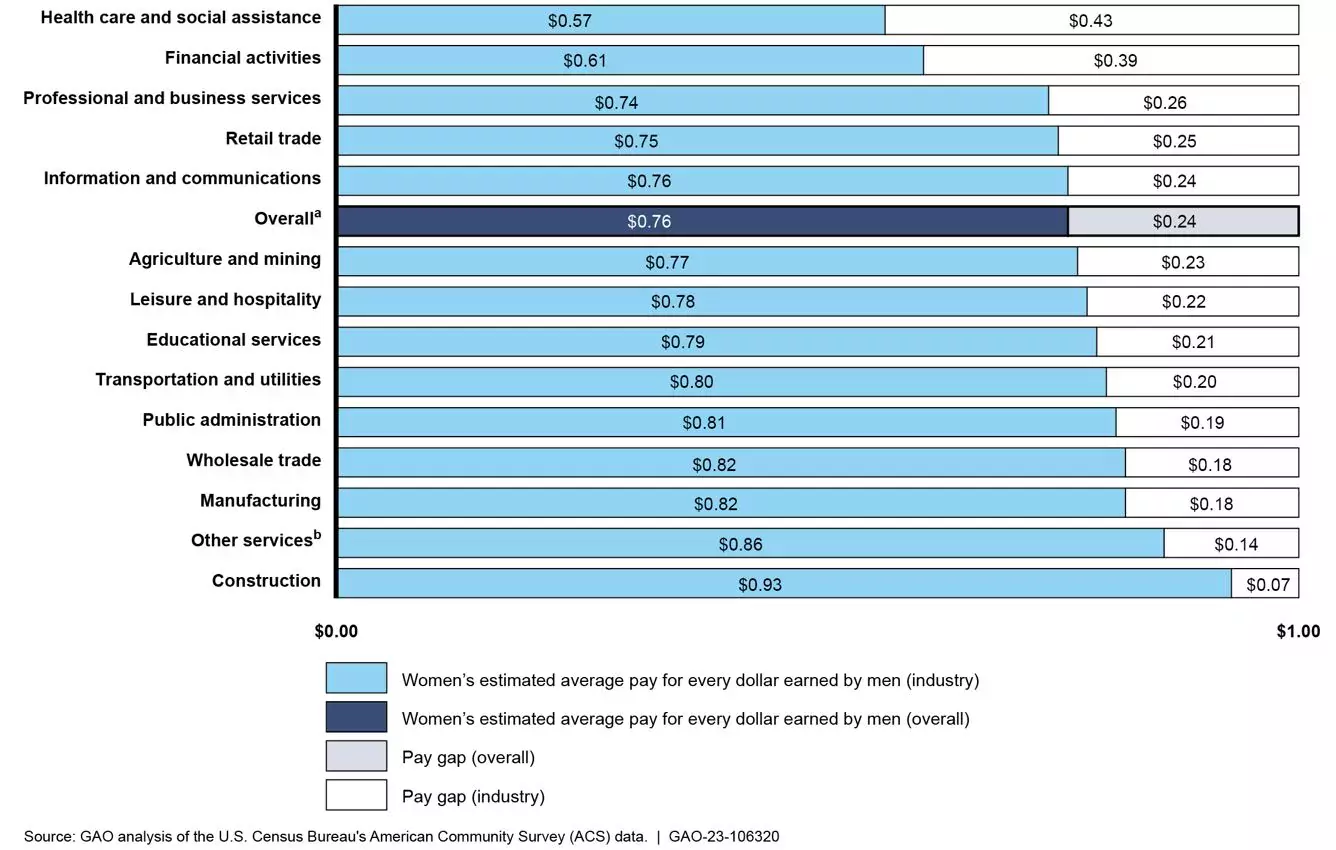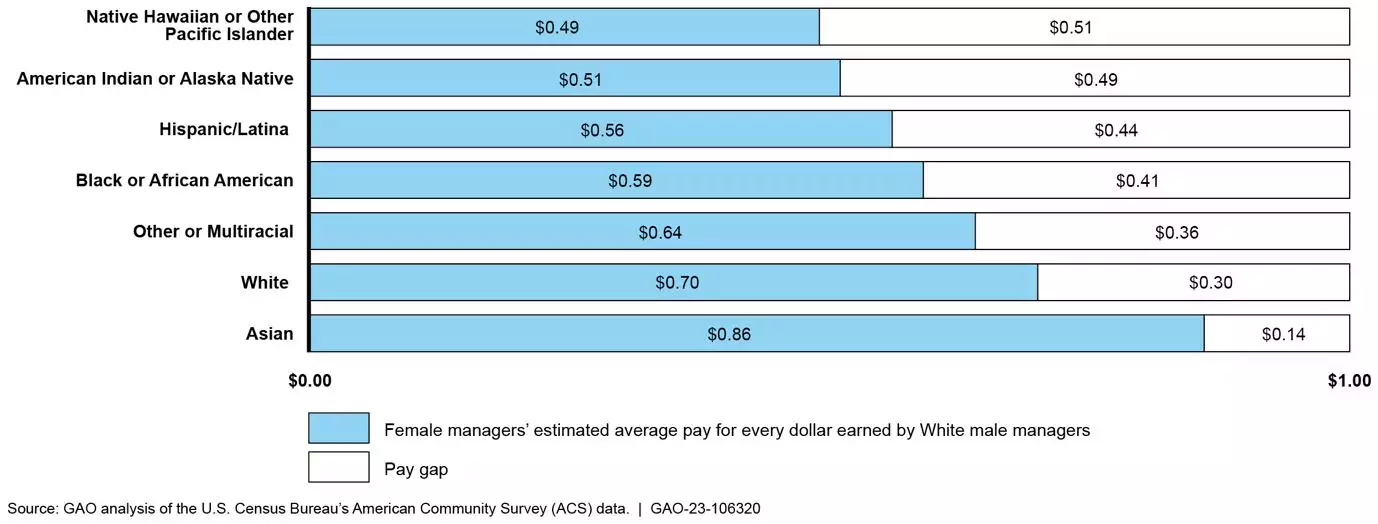Women Continue to Struggle for Equal Pay and Representation
While women make up nearly half of the U.S. workforce, they continue to earn less than men and remain underrepresented in management roles.
Today, in recognition of Equal Pay Day, we look at our new report on the gender pay gap and women’s representation in management.
Image

Women earn less than men, even in industries where they make up most of the workforce
Perhaps surprisingly, some of the industries with the largest pay gaps had the greatest shares of female workers. We looked at the gender pay gap across 14 broad groups of industries, and found that the pay gap was largest in the health care and social assistance industry. In these fields, while women made up 77% of workers, they earned 43 cents on the dollar, on average, compared to men.
The next highest pay gap was in the financial activities industry (39 cents, on average), where 54% of workers were women. Conversely, some of the industries with the smallest shares of female workers also had the smallest pay gaps—including manufacturing and construction.
Women’s Estimated Average Pay for Every Dollar Earned by Men, by Industry, 2021
Image

We also found that women were underrepresented in management positions in 8 of the 14 industries, including 4 industries where they made up most of the workforce—educational services, financial activities, health care and social assistance, and leisure and hospitality. Across all industries, while women made up 47% of workers, they were only 42% of managers.
The gender pay gap varies considerably by race and ethnicity, and by other demographics
Our new report also looked at pay for women in each racial and ethnic group compared to average pay for White men. We found wide variation in the pay gap across groups. For example, compared to White male managers, the pay gap for female managers ranged from 51 cents on the dollar for Native Hawaiian or Other Pacific Islander women to 14 cents on the dollar for Asian women in 2021.
Estimated Average Pay for Female Managers, by Race and Ethnicity, for Every Dollar Earned by White Male Managers, 2021
Image

We also found that the pay gap was larger for women who had at least one child under 18 in their household than for women who did not have children at home. And the pay gap also varied by age and marital status. We found that the pay gap was larger for women 40 and older and for women who were married, among other groups.
Other factors that may contribute to the gender pay gap
Our new report focuses on the overall workforce and doesn’t examine historic or systemic reasons for the gender pay gap. But, our previous report on the federal workforce found that differences between men and women—such as those in occupation, education, and work experience—helped explain a small portion of the pay gap. The rest of the pay gap was unexplained, and may be due to factors not captured in the data we analyzed, such as non-federal work experience, discrimination, and individual career choices, among others.
To learn more about our work on the gender pay gap and women in management, check out our new report.
- Comments on GAO’s WatchBlog? Contact blog@gao.gov.
GAO Contacts
Related Products

GAO's mission is to provide Congress with fact-based, nonpartisan information that can help improve federal government performance and ensure accountability for the benefit of the American people. GAO launched its WatchBlog in January, 2014, as part of its continuing effort to reach its audiences—Congress and the American people—where they are currently looking for information.
The blog format allows GAO to provide a little more context about its work than it can offer on its other social media platforms. Posts will tie GAO work to current events and the news; show how GAO’s work is affecting agencies or legislation; highlight reports, testimonies, and issue areas where GAO does work; and provide information about GAO itself, among other things.
Please send any feedback on GAO's WatchBlog to blog@gao.gov.




